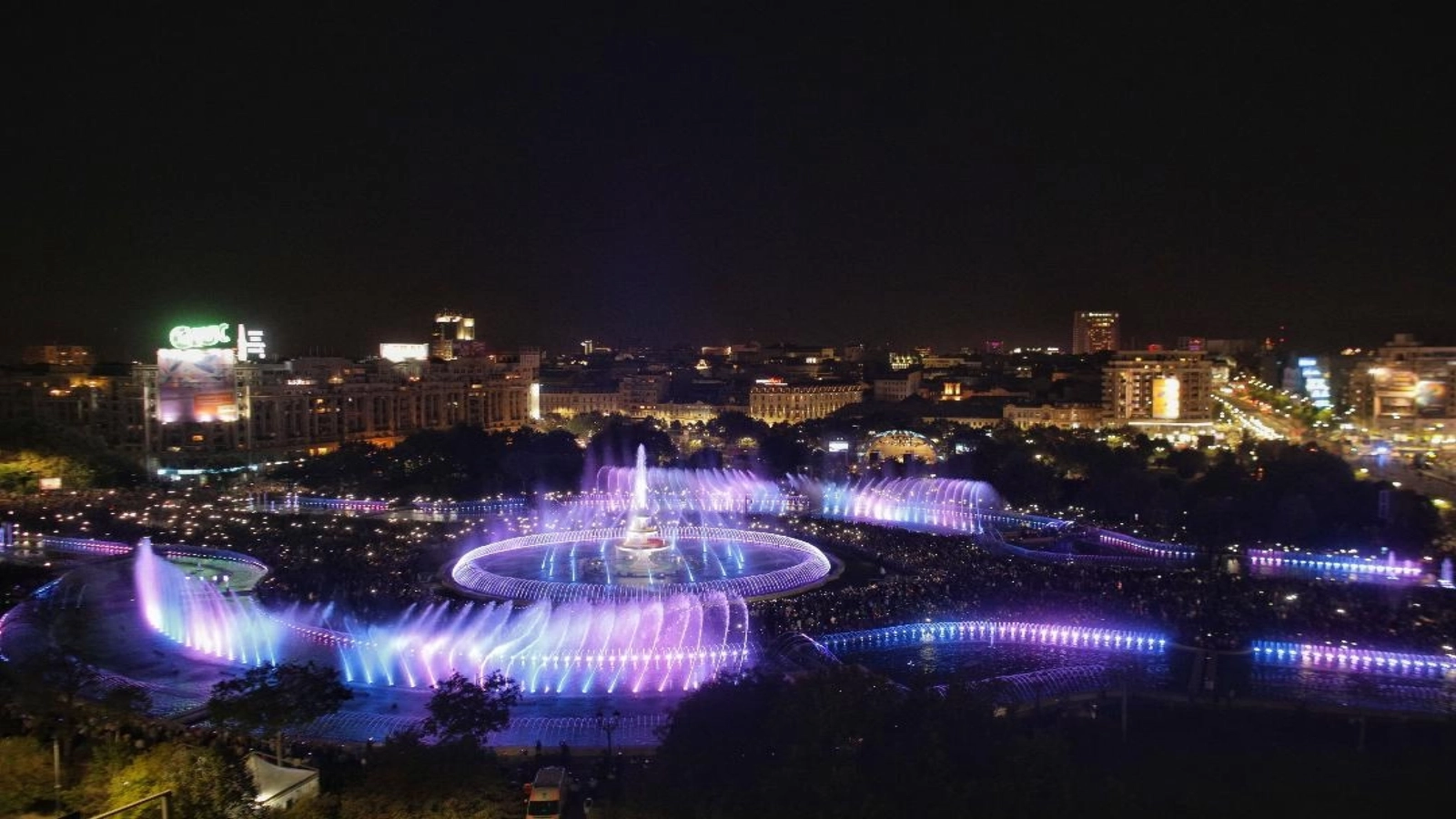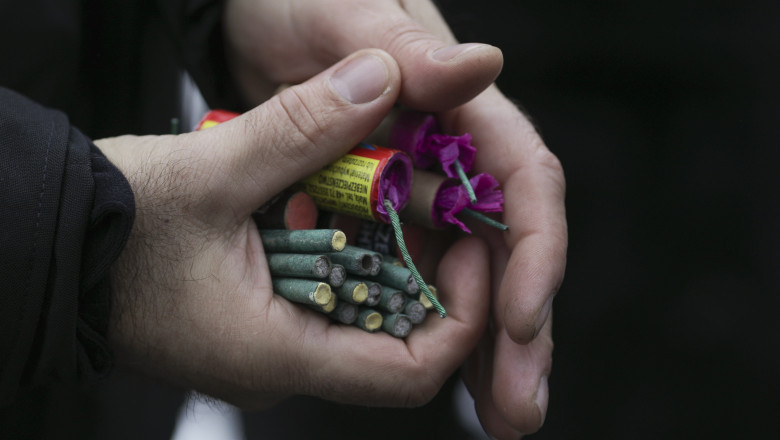What do the Bucharesters like to do in their free time? Do they go to the cinema or do they watch movies at home? Do they prefer the opera or the cinema? How much TV do they watch per day? Do the downtown city inhabitants have different interests to those in the suburbs? All these are questions to which a cultural study from 2016 aims to answer, with a view to drafting a cultural profile of the Bucharest inhabitants.
"Bucharest City Cultural consumption study" is an opinion poll carried out by the National Institute for Cultural Research and Training (INCFC) in 2016, at the request of the ARCUB Bucharest City Cultural Centre, in July-August 2015, on a sample of 1,068 persons aged 14+, with a maximum error margin of +/- 3pct at a 95pct confidence level. The sample was established by the CURS SRL pollster and provided by the INCFC for approval.
The study aimed to identify the level of domestic cultural consumption and in the public space, and to offer an image of the public's preferences regarding the types of events and cultural domains, regarding the access facilities to cultural events and the information channels prevalently used to ease the cultural participation. The study is structured on two large categories: domestic cultural consumption and cultural consumption in the public space, according to the www.culturadata.ro website.
Cultural consumption in the public space: do the Bucharesters prefer the elitist cultural products or the public ones?
As regards the cultural consumption in the public space, once or twice a year or more often, 46pct of the Bucharesters prefer the cinema, 45pct - the local events, 45pct - the theatre, 39pct prefer the product fairs, 37pct prefer the music or movie festivals, 31pct prefer to go to museums, 29pct prefer the entertainment shows, 23pct like the music concerts, 20pct prefer to go to exhibitions in galleries, 16pct like to go to the library, 13pct prefer the opera and 11pct go to the philharmonic.
Of the movie-goers as a consumption form in the public space, 48pct prefer the multiplexes, 31pct the classic cinemas, 22pct the alternative spaces, and 19pct prefer the film festivals.
One of the survey's objectives is to find what kind of culture the Bucharesters are more attached to, the elitist ("highbrow culture" that would include opera, philharmonic, ballet) or the mass one ("mass culture", that would refer to fairs, folk music festivals, cinema). In this respect, the survey concludes that the Bucharesters prefer both forms specific to the elitist culture (ballet - 13pct; opera - 12pct; classical music concerts - 11pct), and forms specific to the mass culture (stand-up comedy - 22pct, folk music concerts -19pct, circus - 18pct, movies, etc).
As for this mixture of culture types, sociologist Barbu Mateescu told AGERPRES that "Bucharest is a socially-complex city, made up of (e)migratory waves coming from various ages and which bring together today varied profile generations. For some people, folklore is an emotional connection with the "home" from which they started off for Bucharest 20 or 40 years ago; other generations or educational sub-groups on the contrary believe that they must alter and diversify their cultural experiences, meaning to synchronise them with the Western cultural consumption's patterns and leave that "'home' very far behind."
TV watching, the most preferred domestic cultural consumption by Bucharesters
The most spread home cultural consumption form is watching TV, 65pct of the respondents saying they watch TV once or several times per day. Radio listening was indicated by 39pct of the respondents, several times per day, while 32pct said they listened to music daily (in general, whether listening from a computer, MP3 format of radio station).
On the other hand, the survey shows that the TV-watching Bucharesters are not in the habit of going to the cinema, opera house, museum, theater, entertainment shows, book fairs or cultural debates. In exchange, this kind of consumer is a church-goer, a mall-shopper, goes on trips outside the city, is a public park-goer, or spends time walking in his own neighbourhood, the survey further shows.
Furthermore, TV consumers like best the fiddlers' music, are spectators at folklore and traditional popular music concerts, circus and illusionism shows, do not like classical music concerts, opera or operetta, do not appreciate contemporary dance or electronic music shows.
As for reading, this kind of product is not equally preferred, the highest percentage (18pct) of the Bucharesters saying they rarely read, once or twice a year. The respondents prefer the newspapers or the magazines, yet here as well the non-consumption figures are high.
In Bucharest, the Internet is used by 63pct of the population
As regards the digital consumption of culture, this is much higher than the classic culture consumption, for instance the written culture. In Bucharest, the Internet is used by 63pct of its population. As compared to the national level, in Bucharest the percentage of those who do not use the Internet at all is lower.
When it comes to frequency of Internet usage by types of activities, 84pct of the Bucharesters said they use the Internet for social networks, 74pct for professional reasons, 74pct to check their emails, 65pct to listen to music, 64pct to get informed, 64pct to read online newspapers or magazines, 55pct to read blogs or forums, 40pct for online games, 23pct to watch TV, 12pct for online shopping, etc.
How Bucharesters see the city's cultural heritage and city life: centre vs outskirts gap
Most of the heritage objectives identified by the Bucharesters were gathered in the core of the city and just a few of those mentioned are in neighbourhoods: Globus Circus, the Drumul Taberei Park, the Mausoleum of the Carol Park and the Bellu Cemetery (Berceni).
As regards the perception to the Bucharest City's vitality degree, 66pct of the Bucharesters "agree" and "fully agree" with the statement Bucharest "is a creative, living, dynamic city", while only 8pct of the inhabitants said about their own neighbourhood that it is "green, alive, cheerful, active".
Furthermore, Bucharesters say that shopping (73pct), walking in the park (66pct) and mall-going (44pct) are among the activities they can perform in the neighbourhood. The survey adds that 18pct say they go to the cinema in their neighbourhood, 8pct to music concerts and only 5pct to festivals. At the same time, when asked what cultural projects they would like in their neighbourhood, 89pct of the Bucharesters say they wish to have music and concert projects, 87pct theatre, 85pct festivals, exhibitions, 80pct traditional creation workshops.
Sociologist Barbu Mateescu believes that this different perception on Bucharest with regard to its neighbourhoods shows an obvious downtown-outskirts gap. "Obviously there are excessively many cultural bodies that are placed in the central and even hyper-central area. This is something many cities in Romania suffer from, the urban vision of communism saw the new neighbourhoods (the workers' neighbourhoods) strictly as "dormitories", not as places to develop an authentic, complete social life," the sociologist specified.
How Bucharesters relate to minorities
As regards the way of relating to minorities, the survey shows that rd 61pct of the respondents said they wouldn't agree for people from minority groups to be part of their family and the same percentage said that they wouldn't participate in a meeting on a topic referring to a minority group. 43pct say they are not bothered to have as neighbours people of no matter what minority, while 53pct said they have friends belonging to a minority group.
According to the survey, social distance (tolerance towards the others) is high, on average, even if most of the respondents say about Bucharest that it is a city that respects minorities of any kind. "It is very likely for those who regarded the city as tolerant to have thought of society in general. The questions about private life work on another level. However, I would like to point out that the difference is not that big: 56pct of the respondents believe the city is tolerant or very tolerant, 38-53pct even demonstrating their tolerance in concrete cases. In other words, we are talking about (only) 3pct - 18pct of the city's population, meaning more than one tenth are those who think they are less tolerant than the average," Barbu Mateescu stressed.
This article is part of the #Bucharest560 editorial project, launched by AGERPRES National News Agency, on the occasion of the 560th anniversary since the first documented mention of the city of Bucharest on 20 September 2019.
#Bucharest560: Bucharesters' cultural profile
Explorează subiectul
Articole Similare

11
We enter new year with confidence, responsibility and sincere desire to do things better (PNL)
11

19
President Dan: In 2026, it is essential that state becomes more efficient, fairer and closer to citizens
19

25
National sanitary-veterinary system is functional and capable of responding quickly to internal risks and international requirements
25

12
Parcels with value less than 150 euros, originating from outside EU,will be charged 25 RON
12

10
CNIR: Application for European funding for Chiribis-Biharia lot and Spinus road junction, submitted
10

15
Pistol (CNAIR): In 2026, target is 250 new kilometers
15

10
Quarterly reference rate for consumer loans falls to 5.68% per annum
10

16
Romanian Police: Seven fugitives, including a 'most wanted' woman, have repatriated
16

22
PSD's Grindeanu: Political stability must remain the key to social and economic development in 2026
22

30
Men's basketball: Dramatic victory for U-BT Cluj-Napoca in EuroCup
30

46
Gov't okays contingent of 90,000 newly admitted foreign workers on Romanian labor market in 2026
46

15
The three Romanians stuck in cable car in Italy - evacuated in good condition (ForMin Toiu)
15

15
We will have a deficit lower than the 8.4% we aimed at (PM Bolojan)
15



















Comentează